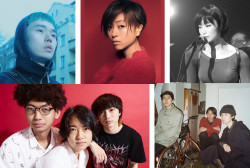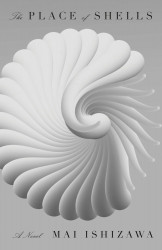
October 16, 2008
Game On!
A new book takes readers inside Tokyo’s game centers and offers tips on how to clean up
By Metropolis
Originally published on metropolis.co.jp on October 2008

“The Turbo-Charged World of Japan’s Game Centers,” Arcade Mania! is part guidebook, part history lesson and all fun. Osaka-based author Brian Ashcraft and well-known Japan watcher Jean Snow give an insider’s view of these noisy palaces of delight, speaking with the players, game designers and industry insiders who make arcades such an inescapable part of the country’s cultural landscape. In chapters ranging from “Rhythm Games” to “Sticker-Picture Machines” to “Dedicated Cabinets,” Arcade Mania! offers both background info and expert advice, making it the perfect read for gamers and non-gamers alike.— Eds

Images courtesy Kodansha International
Faces pressed against the glass of the cabinet, the bears at the bottom are distorted by the weight of those above. They seem a little sad, distressed even—as if they need rescuing. Luckily help is on the way.
Dressed in a black two-piece ensemble with black knee-high boots—attractively yet modestly accessorized with a silver bracelet and a Patrick Cox handbag—Yuka Nakajima doesn’t look like most people’s idea of a gamer. She could easily be mistaken for a woman out on the town for a bit of shopping, or maybe on her way to meet girlfriends at a café. But Nakajima is on a mission.
Maneuvering her way through the maze of pachinko parlors, host clubs, and hostess bars in the red-light district west of Tokyo’s Ikebukuro Station, Nakajima arrives at the Rosa Building, home of the Taito Station game center. Without hesitation, she makes her way through the bright red entrance bearing Taito’s trademark Space Invader logo. This place is clearly well known to her, and, once inside, she quickly starts her rounds, pausing in front of various glass cases then moving on. Eventually she comes to a halt in front of a glass cabinet full of toy bears. Her head tilts slightly to the side as she sizes up the scene before her. Yuka Nakajima is the UFO Catcher Queen, and she is here to catch her prize.
“UFO Catcher” is the most popular term for the various incarnations of crane or claw games that are usually found at the entrance of Japanese game centers. These bright, colorful machines, brimming with attractive, eye-catching, and seemingly easily attainable prizes, are there to lure people who normally wouldn’t venture inside a game center. Add a reasonable price to the equation (just ¥100 for one play, or ¥500 for six), and many are tempted to have a go on one of the vast array of crane games that stand sentry at the doors of the nation’s arcades…
In her late 30s, and mother of two young children, Nakajima was not always such an expert on these games. In fact her induction into the world of crane games was relatively recent. Unlike those with memories of playing as a child, nostalgia pushing them to play years later, Nakajima was instead driven by a desire to help a certain creature in need—the cuddly Rilakkuma bear.
“It was 2003 when these bears first started to appear as crane-game prizes,” recalls Nakajima. “And when I saw them, I just had to rescue them,” she laughs. So far, her humanitarian effort to free as many of the bears as possible has seen her bring freedom to over 3,500 of them (and counting). She gives away most of her winnings to friends and family, but the Rilakkuma (the name combines the Japanese pronunciation of “relax” and kuma, the Japanese word for “bear”) remains her target and obsession. An entire room of her apartment has become a Rilakkuma sanctuary. “I never buy them though,” she insists. “I only rescue them from game centers…”
Stuffed toys, including the ever-popular Walt Disney family of character goods, are the staple of the crane-game case, but from there, prizes enter new realms of extravagance. What’s for dinner? How about those packs of military rations—maybe kimchi pilaf or paella—you won earlier in the day? And girls will love getting samples of the latest perfumes. Snacks (from chocolate to chips) are of course covered, both individual packs and huge, family-sized boxes, as are the latest action figures (with Gundam always a favorite). Some prizes are even useful. “I’ve gotten a rice cooker, as well as an ice-cream maker,” says Nakajima. “I use both.”
Nakajima’s wizardry has led to frequent TV appearances, as well as invitations to various game-related competitions. At the All Nippon Amusement Machine Operators’ Union expo in February 2008 she emceed the National Crane-Game Championships.
She’s also the star of an instructional video explaining how to succeed at crane games that can be seen in game centers up and down the land.
1. Find the right machine.
Finding the right machine is part of the art of great crane catching. “The staff can control how strong or how weak the claw is,” explains the catcher queen. “After one try, you can immediately tell when the claw setting is too weak.” Staff at game centers adjust the strength of the claw in the “interest” of making it fair for everyone, and they are also instructed on how prizes are to be laid out inside the case. If you spend enough time in a game center, you’ll start noticing staff testing the machine after they have placed the prizes inside the case, to make sure that it isn’t too easy to be a winner.
2. Practice makes perfect.
It’s only through constant practice that you’ll become skilled in moving the claw. The expert crane-game player has developed a feel for the way the claw moves, how fast it should move, and what kind of force you need to get from point A to point B. Timing is critical.
3. Look for the hook.
Be on the lookout for anything that sticks out from the mountain of prizes piled up inside the cabinet. If there’s a tag, try to grab it, if it’s a plush doll, go for folded arms, or if the prize is boxed, go for the lid. The goal is to go for anything that has a part that the claw can hook into.
4. The hole is the goal.
Go for prizes that are located near the hole, so that a lunge of the claw can topple them over.
5. The early bird catches the worm.
Get to the game center as soon as it opens, usually at ten in the morning, which is when you’ll find the best placements for prizes, unspoiled by amateur tries that may have created impossible arrangements.
Thanks to the economic bubble and a largely middle-class society, Japanese teens in the early 1990s had endless disposable pocket money. For teenage dudes, that meant hitting the local arcades to spend the equivalent of thirty or forty bucks on Street Fighter II. For teenage gals, that meant either shopping with gal pals at Tokyo shopping haven Shibuya 109 or being dragged around smoke-filled game centers on “dates.” All that changed in 1995. Forever. A year earlier, the then 29-year-old Miho Sasaki, employee at Japanese arcade-game developer Atlus, saw that home-video editing machines were able to superimpose titles on pictures and then print them out. Sasaki then recalled her own love of cute stickers when she was younger and how she’d put them all over her notebooks. She came up with a new idea that mixed young Japanese females’ love of stickers and their love of taking photos of themselves: sticker pictures. Sasaki’s idea was initially rejected. Who the hizzy heck wants to take sticker pictures of themselves? Not Atlus salarymen in suits, apparently! With fighting games all the rage in the mid-1990s, the idea of a machine that took pictures seemed risky and out of place in arcades packed with game cabinets.
Three months and a new boss after her initial pitch, Sasaki’s concept finally found favor with Atlus company president Naoya Harano. Sega immediately saw potential in the concept and worked with Atlus to codevelop the first sticker-picture machine, called Print Club. (Purikura, the shortened, Japanized form of the name Print Club has become the generic term for the photo stickers.)
The digital cameras on the first machines were only able to take lo-res pictures of two or three sitters at the same time, all from the neck up, and with only a few very basic frames as “background.”
There was no privacy curtain for sitters, and the touchscreen and pens that are now de rigueur weren’t yet a feature. Print Club unveiled to a lukewarm reception at an industry trade show in February 1995. Sega and Atlus originally tried promoting Print Club as something business people could use to take pictures of themselves to put on business cards. The first machines didn’t even show up in game centers, but in department store Tokyu Hands. Japan scratched its head, shrugged its shoulders, and was largely indifferent.
Sticker pictures needed more than an industry trade show, business cards, and a department store to get off the ground. They needed a boy band. And not any boy band, but the biggest one in the whole damn country. Yes, sticker pictures needed SMAP, Japan’s reigning pop stars, still going strong, and whose members also feature regularly in TV dramas and motion pictures. Hugely popular since 1991, SMAP is a full-blown Japanese institution—like the Post Office, but with better hair. The heartthrobs did sticker pics on their popular television show SMAPxSMAP, the phenomenon caught on with high schoolers, and by 1996, sticker pictures went supernova and gals were lining up outside the arcades for their chance to pose. Atlus shipped 20,000 Print Club machines to arcades across Japan. “We believed it would have some success,” says Atlus game developer Naoto Hiraoka, responsible for Atlus console games like role-playing game Shin Megami Tensei (1992) and doctor simulator Trauma Center (2005). “But we never imagined it would be such a huge trend.” Calling it “huge” is an understatement and akin to calling a sumo grand champion “husky.” Print Club was ginormous — so much so that by 1998 the then prime minister Ryutaro Hashimoto installed a Ryu-chan sticker-picture machine in his political party’s HQ. The open-to-the-public booth let regular folks take sticker pics with the superimposed smiling politician. In the late 1990s, this was the ultimate photo op!

Name: Sakurina
Specialty: Sticker pictures
Favorite machine: Bijin ni narimasho (“Be a beautiful girl”)
First time in a sticker-pic booth? Sakurina’s here to help. Besides being a professional sticker-picture model, she’s the exclusive face of Japanese fashion magazine Koakuma Ageha. The big difference between doing fashion shoots and sticker pictures? “There’re fewer people standing around when you do sticker pics,” says Sakurina. “That, and you can check what the camera’s seeing via the in-booth monitor.” So, let’s have it—Sakurina’s advice for the perfect sticker-pic:
1. Practice makes perfect.
Take lots and lots of photos of yourself in advance and figure out your best angle.
2. To smile or not to smile?
If you have a chubby face, don’t smile because that will make you look chubbier. The opposite is also true: if you have a thin face, say “cheezu”! and smile.
3. Large face?
While posing for the picture, lower your chin to make your face look smaller.
4. The eyes have it.
Open your eyes wide for doe-eyed anime cuteness.
5. Be spontaneous.
While doing rakugaki, don’t think too much! Just select the digital designs and write whatever you want.

Daigo Umehara rose to fame as one of the best 2-D fighting players in the world: two-times winner of both the Tougeki-Super Battle Opera, an annual fighting tournament hosted by Japanese arcade magazine Arcadia, and America’s oldest and most prestigious fighting tourney, the EVO Championship Series. Umehara set his sights on mastering Street Fighter when he was in his early teens. From the age of 14-18, the now 26-year-old Umehara played Street Fighter II seven hours a day on average. Every day. He spent ¥80,000 a month on feeding the game with coins. Umehara recalls, “I saved and scrimped, worked odd jobs, and used my lunch money so I could play.” He studied up, buying play guides that explained each character’s moves, watched others, and played like hell. Umehara seems like the kind of guy you’d want to pick your horses at the Tokyo Derby—not because he’s lucky, but rather because he’d research down to how humidity affected the dirt track. By the time he was in his late teens, Umehara wasn’t good, he was great, regularly placing at big tournaments. Sure, there were monetary prizes, but you can’t live on a few thousand bucks once or twice a year. Umehara was playing simply because he wanted to be able to walk into any arcade and whip anyone’s ass. At the same time, Umehara has reached a point where there are only a handful of players on this earth who are challenging for him to take on. “It’s not that it’s boring to play regular players,” Umehara says, “It’s just more interesting to play against really great players.” There’s a purity in that.

Like mahjong, pachinko’s origins are foggy. The word “pachinko” has existed since the Meiji Era (1868–1912) and refers to something shot out of a catapult. “Pachin” is the onomatopoeia for “slap” or “click,” and ko means “ball.” The game is believed to be derived from an American contraption called the Corinth Game, an upright version of pinball minus the flippers, which had players shoot metal balls in slots. Another theory attributes the game’s origins to a surplus of metal ball bearings in Japan after World War I. Whatever the game’s origins, the first pachinko parlor, complete with wooden pachinko machines, opened in Nagoya in 1930. After the Second World War, the game’s popularity boomed. In the immediate postwar years there was a cigarette shortage, and each adult was allotted only a handful. But with pachinko, it was possible to win tobacco, forever linking pachinko, cigarettes, and gambling. These days, machines in pachinko parlors pay out metal balls, which can be exchanged for prizes, while game center machines pay out arcade coins or “medals,” as they’re called. These medals cannot be exchanged, but they can be used in medal-game machines.

Take the Hachiko exit at Shibuya station, fight your way over the city’s most congested pedestrian scramble crossing, then down Center-gai, the narrow shopping street to the left of the towering Q-Front building (home to one of the world’s busiest Starbucks). You’ll soon find yourself standing in front of what could be described as a retro gaming shrine, or a museum, even. To the right of the entrance, on the black cement exterior, there’s white graffiti-like lettering proudly proclaiming: “1 PLAY ¥50.” Just on top of that, in Japanese: “Video Games, 230 Machines.” This is it, here we go, Shibuya Kaikan Monaco.
Sickly green walls and ruby red mats lead the way up four floors of retro-gaming goodness. Players plop down on black-cloth-covered stools and shove coin after coin into off-white Capcom- and Sega-branded cabinets. Black electrical tape holds together the edge of one cabinet, while players tap red buttons like they’re typing. You name it, Monaco has it: fighting games, shooters, rhythm games, and a couple of side-scroller beat ’em ups such as Final Fight, where the object is to win points by beating the tar out of hordes of random bad dudes with either fists or swords. There’s Capcom’s 1991 medieval fantasy title The King of Dragons, where players can beat up dwarves and elves, or Capcom’s 1993 comic-book-inspired beat ’em up Cadillacs and Dinosaurs, where players can beat up gun-toting bad guys and dinosaurs. There’s Chinese-myth-inspired hack ’n’ slash, meat-bun-eatin’ Tenchi wo Kurau II (1992), known as Warriors of Fate in English, also from Capcom, who went beat ’em up bonkers and slashing silly in the early 1990s. While it can take hours to clear through a modern home-console game, players at Monaco can blow through these older games in less than 15 minutes. There’s no way to pause or save these retro titles, so the quicker, the better. But with the vast majority of retro games available on home consoles, why do players keep coming? “I see it sort of like the equivalent of movies, and the advent of videos and DVDs,” says Goichi Suda, Tokyo-based game designer and retro fan.“Going to the movie theater is a different and more traditional experience than watching DVDs at home.” There’s no arguing that playing SNK’s 1996 run-and-gun title Metal Slug in the comfort of one’s home is far different from playing at a cabinet with a joystick and buttons, next to sweaty Monaco dudes with cigarettes dangling out of their mouths.

In an inconspicuous corner building a few blocks from [Akihabara] station, you’ll notice the green and yellow signs of G-Front, a shop that specializes in printed circuit boards (PCBs) for a variety of vintage, classic, and hard-to-get-hold-of games. Walk up to the second floor store, grab the price list at the door, and then take in the scene: rows and rows of PCBs, most of them packaged in blue bubble wrap, filling up every inch of shelf and floor space, a treasure trove of retro arcade gaming. As well as the boards to go inside the arcade cabinet, you can buy display signs to put on top of the cabinet, instructions for the game, spare wires, buttons, and joysticks (you’ll even spot a few cabinets too). Prices vary greatly, from just a few thousand yen to quite a bit more. There’s hard-to-find titles like Namco’s last 8-bit title Wonder Momo (1987), a beat ’em-up starring panty-flashing super heroine Momo, for ¥71,400 or Sega’s super-rare, super-expensive maze shooter Tranquilizer Gun (1980), which had little green hunters shoot tranquilizers into wild animals like gorillas, elephants, and lions. While Tranquilizer Gun will set you back ¥207,900, there are deals to be had, like developer Dimps’ brilliant 2-D fighting game The Rumble Fish (2004) for a mere ¥5,000. The clientele is a mix of game-center operators and gaming enthusiasts, who either come to buy boards, or to trade in their old ones. So if you’re thinking of starting your own personal retro arcade, G-Front is the place to go.

Early arcade games would continue to cycle through previous levels, based on the assumption that players wouldn’t be good enough to, say, play Pac-Man for almost five hours straight and clear the 255th board. Ha, little did they know! Since there wasn’t enough memory on the arcade circuit board, hitting the 256th Pac-Man board would cause the game to crash and the right half of the screen turn to a garbled mess of code. Put in the four hours plus of play to hit the 256th board on Dig Dug and watch as character Dig Dug dies over and over again. Likewise, Jumpman in Donkey Kong keels over and croaks when players reach the 22nd board.
Arcade Mania: The Turbo-Charged World of Japan’s Game Centers, by Brian Ashcraft with Jean Snow (Kodansha International, ¥2,000) is available at bookstores throughout Japan.







